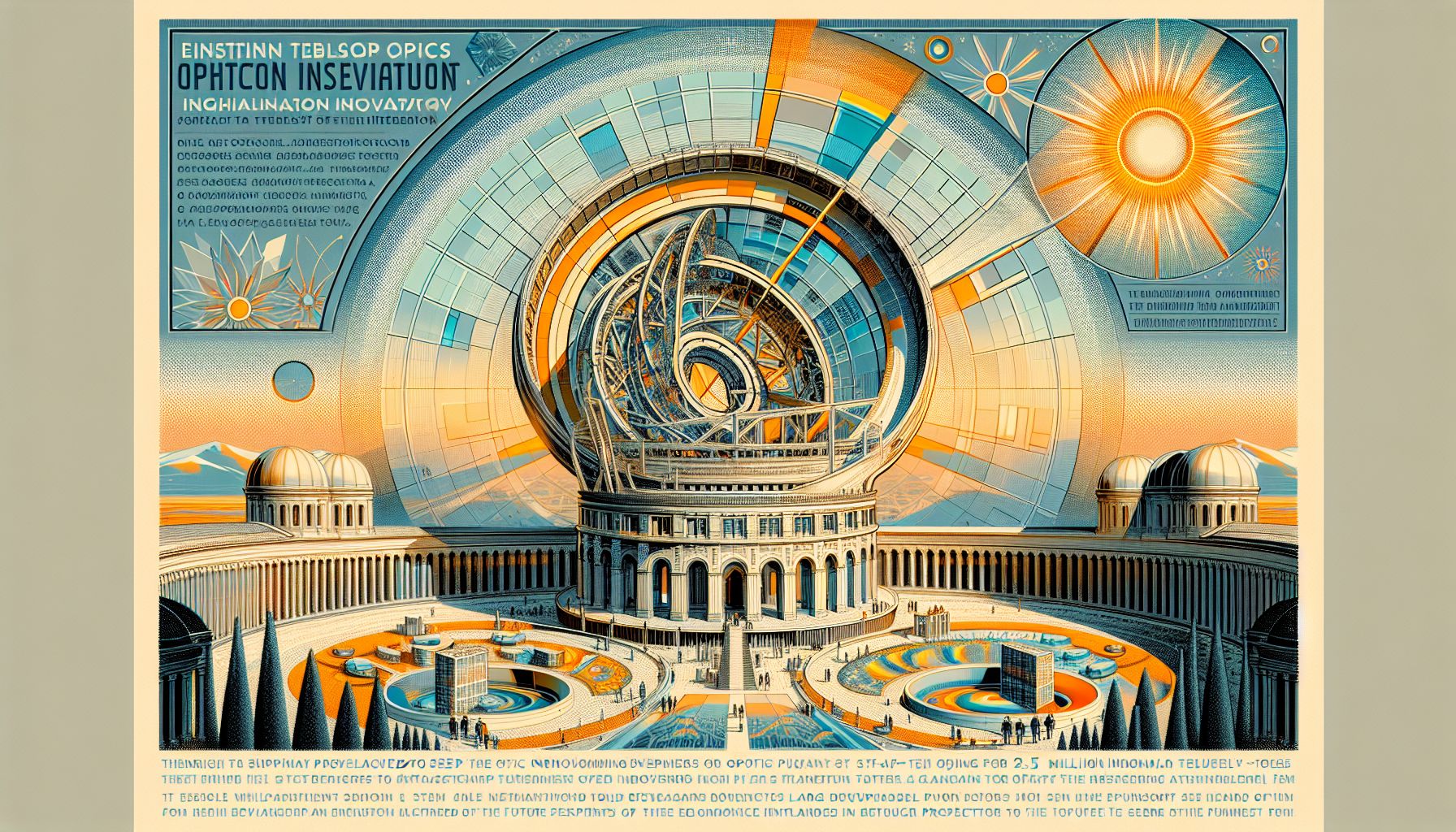Einstein Telescope Project Unveils €2.5 Million Optics Innovation Fund

Limburg, Friday, 18 October 2024.
The Einstein Telescope project has launched a €2.5 million subsidy scheme for optics innovation, targeting high-tech companies. This initiative aims to accelerate technology development for the proposed gravitational wave observatory, enhancing the Netherlands’ future economic potential and strengthening its candidacy to host the facility. The funding focuses on developing large silicon mirrors and coatings for ultra-low temperature applications, crucial for the telescope’s advanced interferometric systems.
Driving Innovation in the Optics Sector
The optics domain is pivotal to the Einstein Telescope’s success, given its dependency on measuring minute relative length differences across its kilometers-long laser interferometer arms. This subsidy aims to foster breakthroughs in optical systems, a core component of the telescope’s functionality. By focusing on the development and interferometric testing of large silicon mirrors, the project seeks to overcome technical challenges associated with maintaining precision under ultra-low temperatures ranging from 10 to 20 K[1].
Collaboration and Eligibility
The subsidy is open to both individual companies and consortia, encompassing startups, SMEs, large enterprises, and research institutions. This collaborative approach is designed to leverage diverse expertise and resources, potentially leading to significant advancements in optics technology. Jorg van der Meij, program manager at LIOF, encourages high-tech companies and knowledge institutions to engage with the initiative, highlighting the support available from business developers to facilitate applications and partnerships[1].
Quantum Computing and Photonics Intersection
This innovation falls within the realm of photonics, a branch of technology dealing with the generation and manipulation of light, integral to quantum computing advancements. The Einstein Telescope’s design incorporates cutting-edge quantum noise reduction techniques, such as frequency-dependent squeezing, to enhance sensitivity. Research led by Xingrui Peng from the University of Birmingham and Teng Zhang from Wuhan University explores replacing traditional filter cavities with more efficient coupled-cavity setups, albeit with theoretical rather than practical success[2].
Economic and Scientific Implications
The potential economic benefits of hosting the Einstein Telescope are significant. By positioning itself as a leader in gravitational wave detection, the Netherlands could attract further investment and talent in advanced physics and engineering fields. The project’s focus on innovative optics solutions not only boosts the scientific capabilities of the telescope but also propels the nation’s high-tech sector towards global competitiveness, fostering an environment ripe for future breakthroughs in both photonics and quantum computing[1][2].

